windows
Jamestown: Legend of the Lost Colony
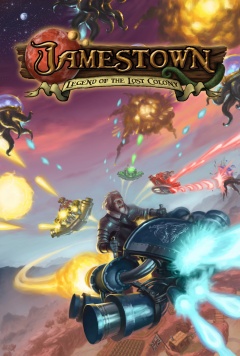 It’s been years since I played a shoot ‘em up. I bought Ikaruga during college basically as a blind buy, and Steve and I played a ton of four player Giga Wing 2 on the Dreamcast, but since then? Well, I played the first hour of Pocky & Rocky... that’s about it. I partially blame this on my system of choice being the DS for the last few years, and also because I’m not very good at the genre. Bullet hell is a term for a reason.
It’s been years since I played a shoot ‘em up. I bought Ikaruga during college basically as a blind buy, and Steve and I played a ton of four player Giga Wing 2 on the Dreamcast, but since then? Well, I played the first hour of Pocky & Rocky... that’s about it. I partially blame this on my system of choice being the DS for the last few years, and also because I’m not very good at the genre. Bullet hell is a term for a reason.
But I was gifted Jamestown: Legend of the Lost Colony during the Steam Summer Sale (thanks Rowan Kaiser, writer at The A.V. Club), so I had the obligation to return to the shmup, essentially kicking and screaming. I knew very little about the just released indie shooter, so here are the quick details: Jamestown is an alternate history story of early American settlers on Mars. Suspension of belief required. Just imagine 17th century Europeans had spaceships and decided to settle Mars instead of North America.
Also know this: Jamestown is a great game, here’s my review.
Magicka
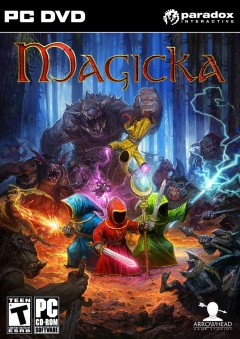 Managing a small group of diverse writers has its perks. When Ian sent me his review of Magicka a few months ago, it was my first exposure to the indie title that is garnering quite a bit of attention this year. Would I have heard of it eventually? Probably. Would I have picked it up during the Steam Summer Sale a few weeks back? Probably not.
Managing a small group of diverse writers has its perks. When Ian sent me his review of Magicka a few months ago, it was my first exposure to the indie title that is garnering quite a bit of attention this year. Would I have heard of it eventually? Probably. Would I have picked it up during the Steam Summer Sale a few weeks back? Probably not.
But cheap games are great and cheap games with good reviews are even better, so I bought the four-pack of Magicka and spread the wealth among the writers. I found some time to finally get into the game during a business trip and gave its first hour a whirl.
Magicka is an action-adventure game where you control a small-hooded magician on his quest to... do something. You have near immediate access to a complete range of elemental spells that serve to challenge you in both finger and brain dexterity. Released in January on Windows, here is the first hour of Magicka.
Minecraft
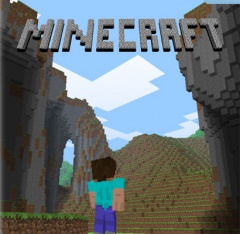 Initially, Humble Indie Bundle 3 was only five videogames for
whatever price you deemed worthy: Crayon Physics Deluxe, Cogs, VVVVVV,
And Yet It Moves, and Hammerfight. After a day or two, a free pass for
Markus “Notch” Persson's Minecraft was added, allowing HIB3 buyers to
play the blocks-laden indie game until August 14, 2011. This might have
had something to do with the fact that Notch was/is one of the top
contributors to the cause, dropping well over $4,000 for a handful of
games he surely already owns. But it's easy to figure out why he'd
support indie games like so, and giving the wary a free looksie into his
own thriving title is a smart decision.
Initially, Humble Indie Bundle 3 was only five videogames for
whatever price you deemed worthy: Crayon Physics Deluxe, Cogs, VVVVVV,
And Yet It Moves, and Hammerfight. After a day or two, a free pass for
Markus “Notch” Persson's Minecraft was added, allowing HIB3 buyers to
play the blocks-laden indie game until August 14, 2011. This might have
had something to do with the fact that Notch was/is one of the top
contributors to the cause, dropping well over $4,000 for a handful of
games he surely already owns. But it's easy to figure out why he'd
support indie games like so, and giving the wary a free looksie into his
own thriving title is a smart decision.
For some time now, I've been interested in Minecraft. Take note that I did not say interested in playing Minecraft, as the two statements are actually very different. Just interested. From the outside, it looks like a creative, germinal, easy-to-play game that is just asking you to open it up and go nuts. Plus, y'know, I grew up on Lego blocks. It's just plain ol' nature here, stacking and breaking blocks galore and building crazy fortresses loaded from ceiling to cellar with booby-traps. However, Minecraft could also share the same problems many other open-world games have, where there is ultimately little purpose.
At E3 2011, it was announced that Minecraft was coming to the Xbox 360, my preferred gaming console. For now, I'll be giving the game a swing on my Macbook, and hopefully it can handle everything. It's struggled to run other games from Humble Indie Bundle 3 (and previous iterations). I am and always will be a console gamer though so if I do enjoy my time here, I'll more than likely download it from Xbox Live Arcade whenever it becomes available.
The Witcher
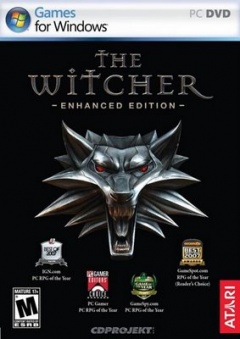 Very rarely do developers aim to make AAA PC exclusives anymore. As one
of the most well regarded action-rpgs in recent history and aided by
numerous recommendations, I felt it was my duty to try The Witcher. Its
developer, CD Projekt, is a Polish firm who's been translating and publishing PC games since the mid-90s. Recently they've been spending money to expand, opening up the RED STUDIO for game development and creating Good Old Games as a DRM-free retro gaming service for modern computers.
Very rarely do developers aim to make AAA PC exclusives anymore. As one
of the most well regarded action-rpgs in recent history and aided by
numerous recommendations, I felt it was my duty to try The Witcher. Its
developer, CD Projekt, is a Polish firm who's been translating and publishing PC games since the mid-90s. Recently they've been spending money to expand, opening up the RED STUDIO for game development and creating Good Old Games as a DRM-free retro gaming service for modern computers.
So far, only The Witcher and its sequel have been released by the studio, with Witcher coming out in October 2007 and Assassins of Kings hitting just two months ago (in May 2011). These projects are large in scope, using source material from a Polish novel series and brought to life by large development teams. The Witcher immediately brings a fresh start to the tale as our hero Geralt mysteriously reappears with amnesia, after apparently being killed by an angry mob. So let's see how this story goes. I'm playing the latest version, the Enhanced Edition Director's Cut.
Harry Potter and the Deathly Hallows - Part One
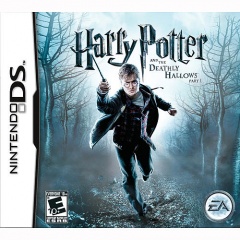 Some months back, while browsing the shelves at our local GameStop, my wife picked out Harry Potter and the Deathly Hallows, Part One for the Nintendo DS; I had earlier warned her of the bad reviews for the Kinect-heavy atrocity of the same name that dropped on the Xbox 360, and we both assumed that the DS version would almost have to be better than that. However, she did not play for very long, returning to her staples of Animal Crossing: Wild World and The New Super Mario Bros. She either lost interest or got stuck; at one point, I had to help her through an unclear potion-making minigame.
Some months back, while browsing the shelves at our local GameStop, my wife picked out Harry Potter and the Deathly Hallows, Part One for the Nintendo DS; I had earlier warned her of the bad reviews for the Kinect-heavy atrocity of the same name that dropped on the Xbox 360, and we both assumed that the DS version would almost have to be better than that. However, she did not play for very long, returning to her staples of Animal Crossing: Wild World and The New Super Mario Bros. She either lost interest or got stuck; at one point, I had to help her through an unclear potion-making minigame.
With the final installment of the final movie creeping closer, I thought this would be a perfect time to see how solid of a Harry Potter game it actually is. Plus, I had some time to kill while on vacation.
Aparecium!
Dragon Age II
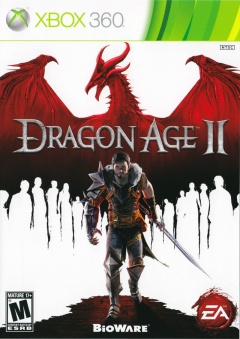 I enjoyed Dragon Age: Origins quite a bit, but it was a rocky ride to get going. Origins has a lot of stats, a lot of skill trees, and what I found to be a somewhat confusing array of attributes to put points into. When I heard that Dragon Age II was being developed to address many of those aspects of the game, plus a complete overhaul of the dialog system to make it similar to Mass Effect, I was pretty excited.
I enjoyed Dragon Age: Origins quite a bit, but it was a rocky ride to get going. Origins has a lot of stats, a lot of skill trees, and what I found to be a somewhat confusing array of attributes to put points into. When I heard that Dragon Age II was being developed to address many of those aspects of the game, plus a complete overhaul of the dialog system to make it similar to Mass Effect, I was pretty excited.
When Dragon Age II was released, it was met with a Spore-like backlash that railed against everything even semi-related to the game. Gamers lamented the Mass Effectification of their beloved hardcore RPG (which I seemed to deem a compliment reading from afar), and while the professional reviews of the game were lower than Origins but still highly respectable, a seemingly large group of gamers tossed goose eggs at it.
I’ve always been in the play-it-myself group of gamers. I can understand some of the spite, but forming an opinion before you even play the game usually makes one look foolish (and heck, I often look foolish after just an hour!).
Here’s my first hour review of Dragon Age II, released by BioWare in March, 2011.
Bit.Trip Runner
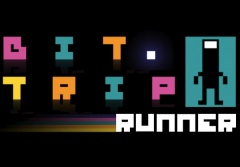 The era of digital distribution has been good to many smaller
developers. One needs to look no further than the Minecraft success story to see
just how fruitful the budget game market can be.
The era of digital distribution has been good to many smaller
developers. One needs to look no further than the Minecraft success story to see
just how fruitful the budget game market can be.
Even on Nintendo's meager WiiWare service, some have found the opportunity to shine. Gaijin Games, a small studio founded by a former LucasArts employee, has found acclaim with its Bit.Trip series. With six games in the series released within two years, each Bit.Trip title is built on the same foundation of rhythm and psychedelic retro aesthetics but offers a different gameplay hook. Beat, the first title, is like the love child of Pong and a laser show. Core is more like a tricky Guitar Hero with a D-pad. Void is an avoid-and-collect using the nunchuk's control stick. Fate is a rail shooter utilizing the Wii remote's pointer. And Flux, the final chapter in the Bit.Trip saga, returns to an experience similar to the choreographed Pong performance that birthed the series in Beat.
I recently acquired Bit.Trip Runner, the fourth game released (and the third I've played, after Void and Beat). It happens to be the one that generates the most buzz in the gaming community. Runner certainly sounded appealing to me when I was introduced to it as a "rhythm-based platformer." My experience with the game, however, came somewhat short of my high hopes.
Portal 2
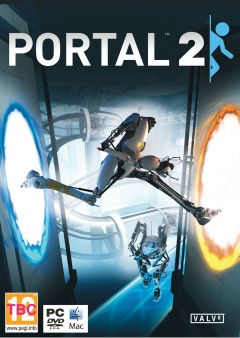 As the sequel to my 2007 Game of the Year, I had high expectations of Portal 2, and so did the developers Valve, and everyone else mildly interested in video games. This was a milestone release, and Valve has been rewarded with many accolades and undoubtedly excellent sales numbers. I was able to sit down with Portal 2 for Windows and beat it in three extended gaming sessions over a few weeks.
As the sequel to my 2007 Game of the Year, I had high expectations of Portal 2, and so did the developers Valve, and everyone else mildly interested in video games. This was a milestone release, and Valve has been rewarded with many accolades and undoubtedly excellent sales numbers. I was able to sit down with Portal 2 for Windows and beat it in three extended gaming sessions over a few weeks.
That last sentence might be rather revealing, yes, the game took me weeks to beat. I took on the original Portal in one sitting. Of course, Portal 2 is longer than the original, and I have two kids now instead of none, but I’ll say right off the bat I felt like some kind of spark was missing.
So let’s just dive right into my review of Portal 2. This review will probably be shorter than usual simply because of my personal pact to spend less time writing full reviews this year, so hopefully I can more succinctly say what needs to be said.
Diablo II - History and Gameplay
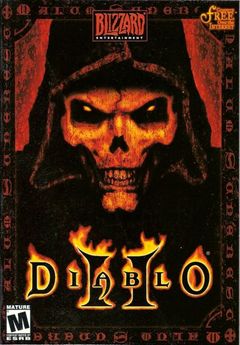 On November 30th, 1996 the world was rocked by the release of what is quite possibly the start of the isometric hack’n’slash genre: Diablo. It was renowned for its remarkably dark atmosphere, creative character customization, easy control scheme and extremely in-depth storytelling.
On November 30th, 1996 the world was rocked by the release of what is quite possibly the start of the isometric hack’n’slash genre: Diablo. It was renowned for its remarkably dark atmosphere, creative character customization, easy control scheme and extremely in-depth storytelling.
Not only did it have all of this, it also had online multiplayer via a free service called Battle.net that is also host to virtually all of Blizzard's games.
After a few years of garnering international success, it was announced that a sequel was in the works. Diablo II was released on June 29th, 2000. For me, educationally, it was all downhill from there.
This is part one of a multi-part review and historical remembrance of Diablo II. We also played the first hour of Diablo II a few years ago.
Crysis 2 - Video
 PC game development is hard. Unlike consoles and their mass-manufactured conformity, every
PC has a different set of guts, so there comes a time when the
development team needs to test their code through dozens of Frankenstein
computer setups to make sure the game actually works on an acceptable
percentage of PCs on the market.
PC game development is hard. Unlike consoles and their mass-manufactured conformity, every
PC has a different set of guts, so there comes a time when the
development team needs to test their code through dozens of Frankenstein
computer setups to make sure the game actually works on an acceptable
percentage of PCs on the market.
Crytek had a fairly genius solution to this annoyance: they made a game that no computer assembled in the present day would be powerful enough to process, and figured that the future would solve their problems for them. It was called Crysis; Crytek's prophecy was fulfilled when NASA aborted the space program in order to refocus its priorities towards creating a machine capable of playing this game [citation needed].
For whatever reason, Crytek abandoned this strategy with the game's sequel. Crysis 2 was created to be played not only on PCs assembled on Earth and before the year 2018, but on current consoles as well. I played a bit of Crysis 2 and got a sense of what the distant future will be like when consumer machinery finally catches up to the original Crysis' requirements.
I recorded the first hour of the game in glorious 480p and trimmed the downscaled footage to give you a taste of the game's opening sixty. A busted monument, superpower lessons, robot spiders, and choke-slams await.
